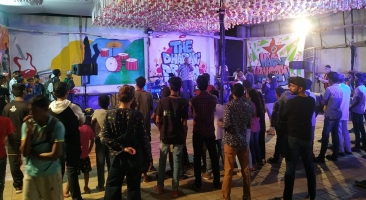Hip-hop has become a globally successful art form in terms of aesthetics and commerce since its inception in New York’s poverty-stricken South Bronx in the 1970s. Its popular appeal among the youth helped it make its way into several countries globally, including India.
Hip-hop is creating a cultural and musical revolution in India, visible in its soaring demand in the country’s music industry and impact on young adult dressing. This recent phenomenon of hip-hop in India is predominantly led by artists from Mumbai, and at the heart of it has been Dharavi with its culturally vibrant hip-hop microscene. A working-class locality made up of many neighbourhoods, Dharavi’s hip-hop gives voice to the personal and political angst of its people. Dharavi’s hip-hop journey so far, like most things Dharavi, has been a collaborative process where families, communities and artists with their implied intersections have come together to turn the streets and the homes to proud performance spaces, with every other Dharavi local a hip-hopper.




